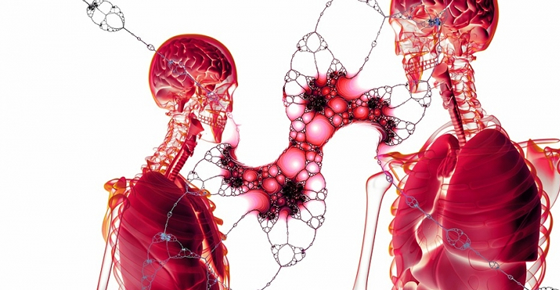
Due to its complex relationship with the central nervous system, it is not a surprise that the gut plays a role in the recovery after a brain injury. As a matter of fact, gut dysfunction is actually one of the numerous symptoms of a TBI, including increased permeability of the gut lining, which leads to “leaky gut”, increased immune response. Based on the following mechanisms:
- Neurotrauma will cause local inflammation within the brain, which will then lead to microglial cell proliferation.
- This increase in microglia activity will increase the brain’s vulnerability to immune responses for future external (e.g., subsequent TBI) or internal (e.g., infection) attacks
- If not treated, these hyperactive immune cells in the brain may become neurotoxic and trigger the pathophysiological cascade of various neurological conditions (e.g., depression, Alzheimer’s, etc.),
- In that case, persistent neuroinflammation will increase the risk of neuropsychiatric and neurodegenerative diseases.
- By looking beyond the confines of the CNS and incorporating the gut, it is clear that systemic and peripheral influences occurring outside the CNS can exacerbate the local pathophysiological response to TBI occurring within the brain, including ongoing neuroinflammation.
- TBI can cause structural and functional damage to GI tract.
- This type of intestinal barrier dysfunction typically leads to increased intestinal permeability, potentially causing leaky gut.
- Increased intestinal permeability is also associated with a systemic overactive immune response
- The systemic inflammatory response resulting from the damaged gut will exert influence on the vulnerable and previously primed microglia to further exacerbate neuroinflammation.
Dysregulation of the autonomic nervous system
How does that happens? The key is dysregulation of the autonomic nervous system. We just saw that the gut innervation is highly dependent of the autonomic nervous system, particularly due to the vagus nerve, which is used as a bi-directional pathway between the brain and the gut. As we learned earlier, one of the most common symptoms after a brain injury is dysautonomia, or dysregulation of the autonomic nervous system. It will be characterized with both structural and functional changes in the gut:
1) Decreased contractility of the smooth muscles within the gut lining, resulting in increased transit time of food digestion (Olsen et al 2013, Sun et al 2015).
2) Alteration in the intestinal mucosa morphology (Hang et al 2003): This happens as soon as a few hours after the head injury and is still visible after over a week. The most significant changes include cell tissue lining shedding and defective tight junctions in the intestinal wall, resulting in decreased nutrients absorption and facilitates undesirable crossing of pathogen in the gut into our system, which can overstimulate our immune system and cause inflammation. This phenomenon is called Leaky Gut Syndrome.
Systemic inflammation
And that’s not all. Not only the damaged brain can lead to damaged gut, but now that the gut is damaged, it produces systemic inflammation that will then works its way to the brain and add more inflammation to the brain! As we just saw, one of the characteristics of the leaky gut is to create inflammation. Because the gut lining is now compromised, microbes that usually confined in the gut, can now cross the intestinal barrier and have access to the inside of our gut, which is a totally different environment, full of immune cells. Those immune cells with sense those microbes and see them as foreign pathogen that are attacking our system, they will trigger an immune reaction in order to try to get rid of them. That immune reaction will typically involve inflammatory cytokines (Bischoff et al 2014). The presence of that systemic inflammation will be sense by our brain as well, which will react and increase the microglial cells activation, leading to more neuroinflammation. Therefore, not only the brain will now be inflamed from the head injury but also as a results of the systemic inflammation coming from the autonomic and gut dysfunction.
If you want to fix the brain, you have to fix the gut
Now that we have established the relationship between the gut and the brain, we can start to think about a way to improve the outcome of a brain injury by addressing the gut function. One of the potential therapeutic target is to reduce dysbiosis by avoiding pro-inflammatory food (sugar, processed food, refined carbohydrates, alcohol, trans fat,…). Use of prebiotics and probiotics can be also very useful, as it has been shown that it helps to tightnen the gap junction of the gut lining (Hsieh et al 2015). Fish oil, which is rich in omega-3 essential fatty acids (specifically DHA for the brain) will also help to decrease systemic inflammation (Lukiw & Bazan 2008). Other nutrients useful for the gut lining includes zinc, vitamin D, and magnesium (El-Tawil 2012, Raftery et al 2012, Nevin & Rajamohan 2015).
Vagus nerve stimulation
Another very important therapeutic strategies is to stimulate the vagus nerve. Because this cranial nerve directly link the brain to the gut through its parasympathetic fibers, it has a huge impact on the recovery after a brain injury. Borovikova et al (2000) showed that stimulating the vagus nerve helps with:
1) Providing anti-inflammatory cholinergic response
2) Improving integrity of tight gap junction proteins
3) Decreasing intestinal permeability
4) Improving integrity of the blood brain barrier.
Vagus nerve therapies includes simple strategies such as gargling, deep breathing, humming, or use more advanced devices such as transcutaneous nerve stimulation.
